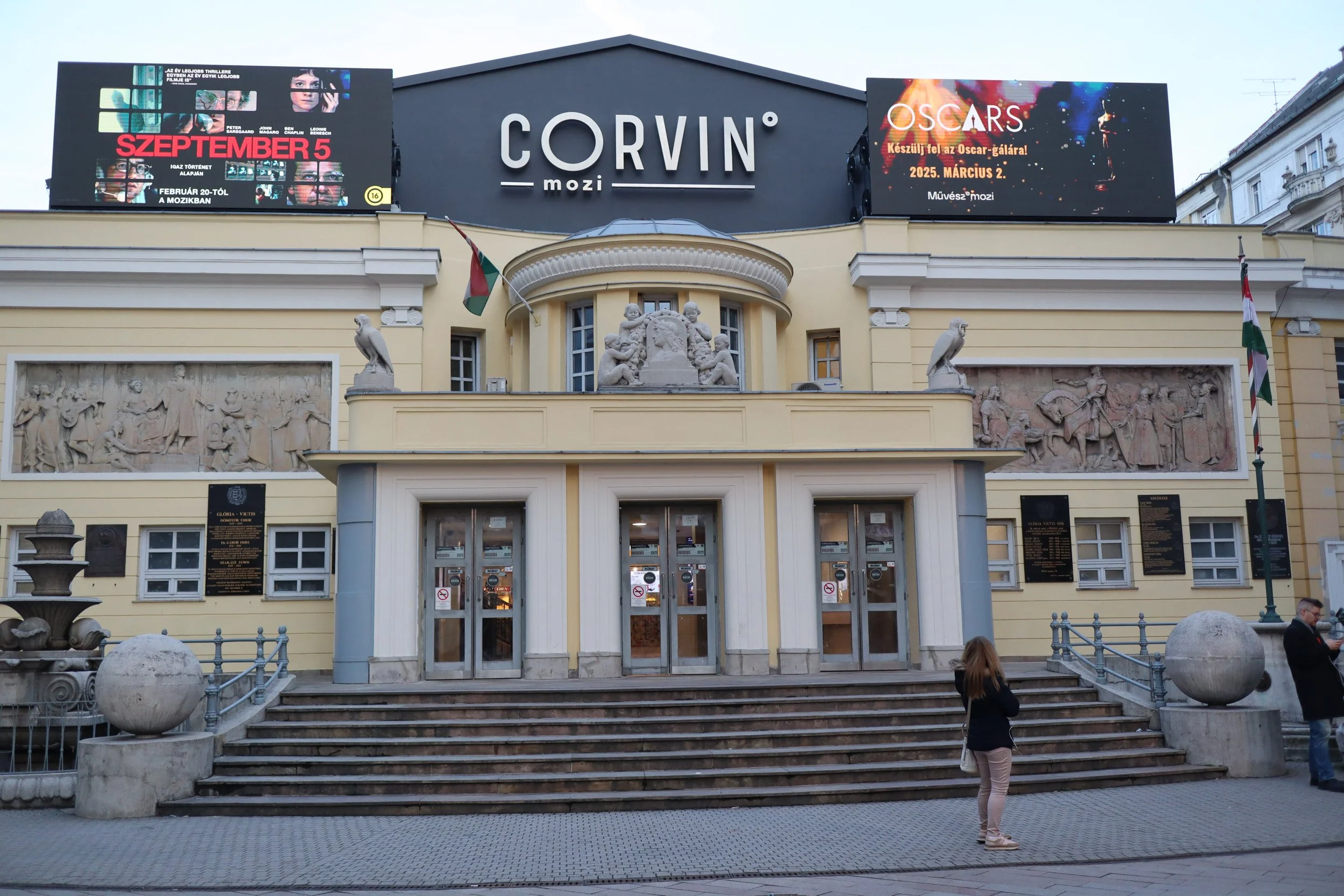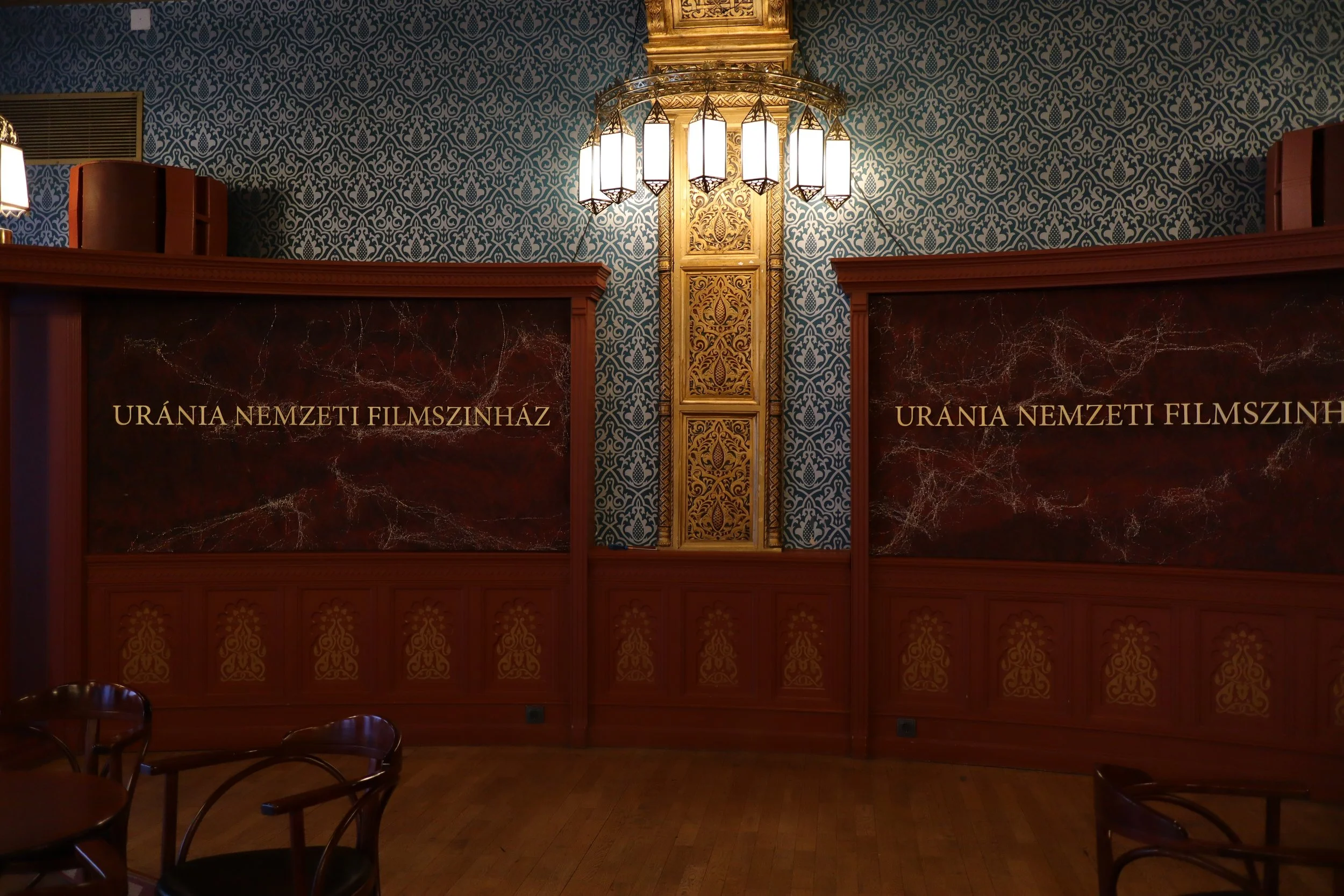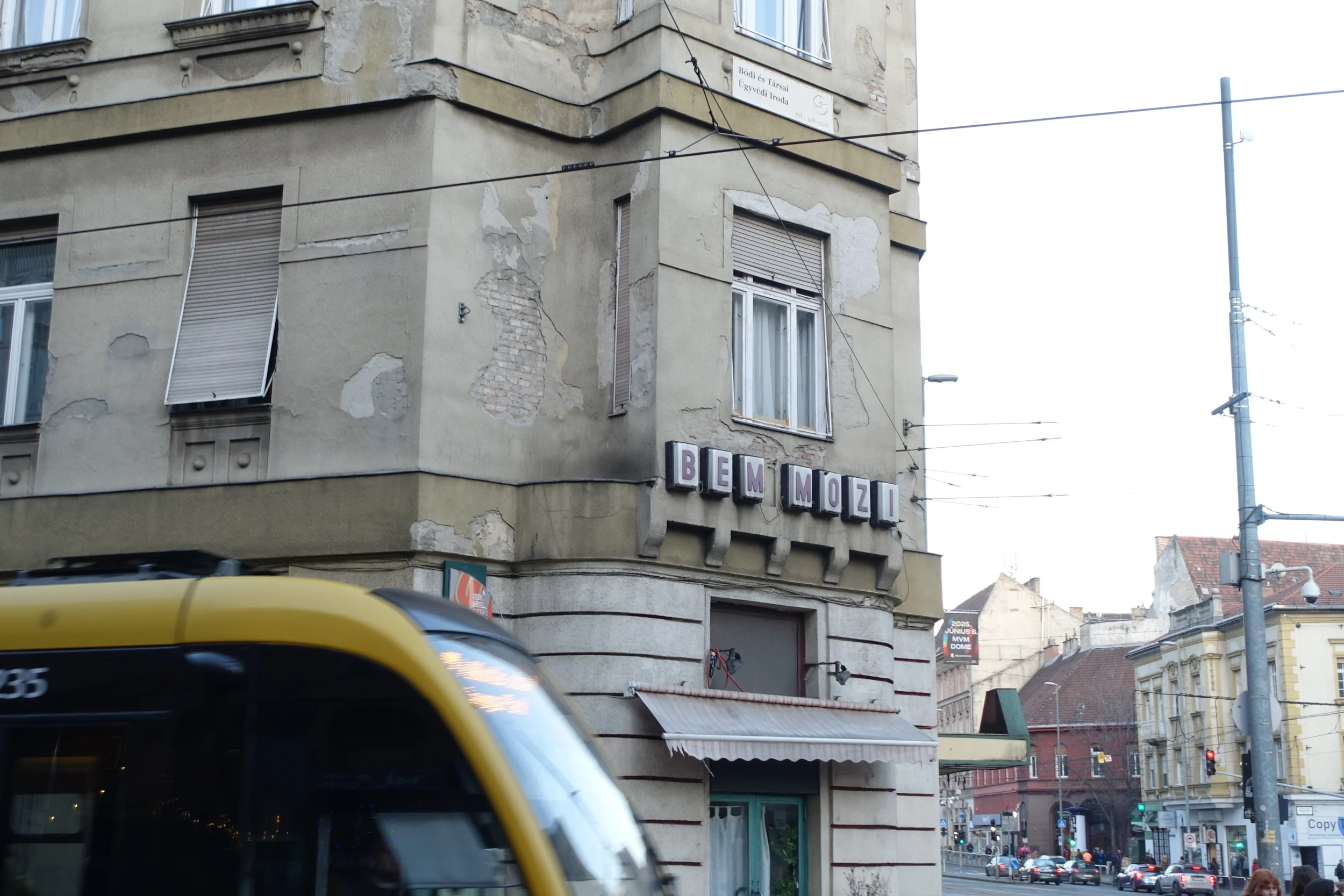Let the credits roll
At the turn of the twentieth century, Budapest rivalled New York as the world’s fastest growing city. Embracing the modern, cinema quickly became popular and Hungary developed a rich tradition of film makers. Rising antisemitism saw some from Jewish backgrounds leave the country in the 1930’s and quickly make their mark in western Europe or Hollywood. Michael Curtiz (Kertész Mihály) who directed Casablanca and Alexander Korder (Sándor László Kellner) producer of The Third Man, spring to mind. During communism there were more escapees. Andy Vajna ( András György Vajna) who directed Rambo and The Terminator made his name in America. Mephisto director István Szabó has enjoyed success in Hungary and beyond. There are many others of Hungarian descent who have made great contributions to cinema. Zsa, Zsa Gabor, Tony Curtis and Rachel Weisz as actors, for example. With such a glorious past, it's fitting that the independent cinema scene in Budapest remains alive and well.
Ferenc Battonyai-projectionist at the Corvin Mozi
Ferenc Battonyai has worked as a projectionist at the Corvin Mozi (cinema) since September 1988. He has seen the analogue age pass into the digital one but retains a fondness for the old technology, lovingly displayed in the reception area. He proudly showed me a Carl Zeiss Jena TK 35 projector from among the collection. Otherwise, the Corvin cinema has adapted to modern times and fills its seats with a mixture of Hollywood, independent releases and specialist seasons like the annual Korean festival.
Corvin Mozi 2025
In Hungarian history, this ‘Mozi’ played an important role in the 1956 uprising against the Soviet government. For over a week the ‘Corvin boys’ defended this strategically important corner of the city against Russian tanks, with the cinema located at the centre of the battle. A statue of a teenage street fighter from that period stands outside the front door. At the anniversary of the uprising each October, it becomes surrounded by tea candles and flowers to immortalise the youthful rebels who stood up to oppression. See my previous blog-Three rallies, where there is an image.
Corvin street fighter on the steps of the cinema in 1956. Image courtesy of Fortepan
Fortepan -197798
Three hundred metres from the Corvin Mozi, I taught in a language school that I later discovered, occupied the space of the former Tátra cinema which operated from 1906 until closing in 1987 as the Balaton. It was put out of business by the success of the Corvin and closure of the nearby tram stop after Metro line 3 was opened. I was always puzzled by the shape of my work space. Too cylindrical for offices and clearly not built to contain classrooms, the interior was of unusual dimensions. Not that I guessed its original function. I am pleased that after the language school relocated, and despite its limitations, the space has found a new role in teaching refugee children from Ukraine.
Tátra/Balaton cinema in the aftermath of the midst of the 1956 uprising. Image courtesy of Fortepan.
Fortepan-079
Situated on Rákóczi út , one of the busiest streets in the capital, the Uránia Cinema is officially classified as the National Film Theatre and it’s a great place to watch a big movie. With an oriental interior design and spacious café, the Uránia feels like somewhere from a different continent or even another planet. The main screen is large, the sound excellent and the seats comfortable.
A wide range of Hungarian and foreign films are shown here, mostly in their original language. There are films festivals from different countries to enjoy. A big venue originally built as a music hall, this is the place to watch Oppenheimer, Ben Hur or Star Wars. It seems strange to watch low budget independent offerings here, but plenty of these can be found in the repertoire. Either in front of the silver screen or relaxing in the opulent café, the Uránia is a great place to escape from the world.
Uránia cinema cafe
The Pushkin can be found on a continuation of the same busy road, along from the Uránia. Another intriguing venue with a stylish interior. Statues and marble columns decorate the reception area. In this elegant building, the ceiling of the main auditorium is painted a glorious gold . The huge café acts as a bar and dining area in the centre of the city. The Pushkin has a Saturday cinema club for children and remains a popular destination for film lovers.
Reception area at Pushkin CInema
The Muvesz (Artist) is located on the Nagy Korut (grand boulevard) in a well-heeled part of the city. It has a kitschy, art deco style and like the Pushkin, operates as a repertory cinema, changing its offerings on a daily basis. Often showing Hungarian films with English subtitles, the cinema boasts five small screens offering a wide selection of movies and, unusually, a vast DVD collection that can be rented out. Its atmosphere and clientele remind me of the Gate cinemas in London, before they became so plush and expensive. And that’s an important point, all of these cinemas are reasonably priced to attend compared with the UK.
Muvesz cinema from outside
Probably the cheapest and most reminiscent of ‘real’ independent cinemas in London, is the Bem Mozi. This small venue in Buda has a friendly and mildly Bohemian air. Something like the dusty old Scala Cinema in Kings Cross Road but much smaller, the number seventeen tram creaks past the wall of its only auditorium. The café and bar are reminiscent of a ruins bar with graffiti scattered between intriguing film posters. Stop Putin, Stop the War, is proclaimed over the counter. Ambient music or reggae plays in the background. The crowd are as eclectic as the films on offer. Few of the packed house for Roman Holiday could have been born when this film was first released. From the enduring glamour of Audrey Hepburn to the savagery of Reservoir Dogs, all of cinema feels at home here.
Bem Mozi with number 17 tram going past.
And there are more independent cinemas to be found in Budapest as well. The petite Toldi near the Basilica; the Kino mozi and Art+ are possibly even smaller. Not to forget the Tabán in an upmarket Buda location or the almost hidden Cirko-Gejzír near the Parliament. The latter, specialising in Hungarian films, calls itself the ’smallest cinema in Europe’ and is only identifiable by a door leading down into a cellar. All of these ‘mozik’ are similar in their commitment to good cinema: all of them quite unique in style. A big contrast with the multiplex cinemas located in most shopping centres. Offering standard fare, they are the popcorn relatives of their like across the UK.
Budapest and Hungary are frequently used as a location for international film makers. Filming costs are subsidised by the Hungarian state and the diverse architecture means the capital could pass for Berlin or Moscow. In last year’s Lee about the photographer Lee Miller, Budapest passed as wartime Paris. The 2025 Oscar winner for cinematography was ‘The Brutalist’. Adrian Brody took the award for leading actor and the film was partially made in Hungary. Brody plays a Hungarian architect and is himself of Magyar heritage.
Visting an independent cinema in Budapest, is for me an excursion into nostalgia. I remember fondly the library theatre in Luton where I first saw ‘One flew over the Cuckoo’s nest’. Then Cinema City in Norwich, while at UEA, when I watched a road movie rather than attend an economics lecture. A wise move you might say, although I probably paid the price in terms of not having a career in finance or banking.
Then there were the many opportunities on offer in London. Five hours and seventeen minutes of ‘1900’ at the Everyman in Hampstead on an autumn afternoon. Scary midnight experiences in Notting Hill after a visit to the Electric in Portobello Road. A mad rush for the last tube, after a Filipino double bill at the Brixton Ritzy. Haunted by the ‘Les Enfants terribles’ at the Scala on a bitter winter’s evening. Not enjoying my first viewing of ‘ Withnail and I’ at the Coronet. Blown away by Mad Max Two and the Long Good Friday at the Kilburn Classic, where kids used to sneak in without paying and were chased by attendants with torches. Laughing hysterically at the ‘Texas Chainsaw Massacre’ at a gigantic but almost empty cinema, also in Kilburn. The name of which I can’t recall. Some of you, dear readers, will remember those visits as well. Like the five hours of 1900, I could go on and on… and given half a chance I certainly will!







